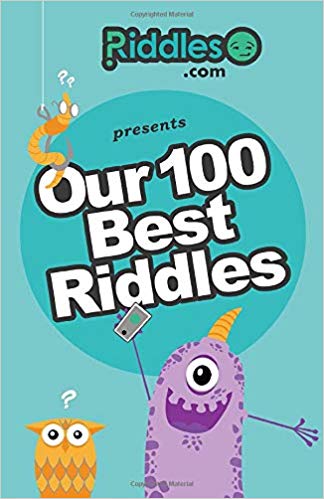Enter a keyword into the search box. The riddle search will check to see if the word is in the Title, Riddle, or Answer and return results if they exist.
"What" Riddles - Next 10 of 3082.
Riddle:
How is it possible to always find what you're looking for in the last place you look?
Answer: If you find what your are looking for then you would stop looking so it would be in the last place you look.
Riddle:
A timorous heart at no time succeeds in acquiring the beautiful damsel. What is the proverb?
Answer: Faint heart ne'er won fair lady.
Riddle:
It is something people wake to every day. Simple and easy, in a gradual way. You will crave and desire, That which water cannot provide. And which other drinks try to hide. It brings people together this is true, But it will make a dependent of you. What is it?
Answer: Coffee/Caffeine.
Riddle:
A rookie police officer was working his assigned beat, but to make his job a little more interesting, he decided to bring his radar gun along with him. He began testing the gun by pointing it at various moving objects to determine their speed. He noted people were moving between one and three miles per hour; however, when he pointed his radar gun away from the crowd of people there, the gun suddenly read 80 M.P.H. Again he pointed it in the same direction, and he got a speed reading of 85 M.P.H. He continued pointing the radar gun toward the same general area for the next 30 minutes and recorded speeds ranging between 60 and 95 miles per hour. Considering the fact there were numerous people milling about the area he was patrolling, why do you suppose he never once reported any of these high speeds to his department? For the safety of all of these people, shouldn't a speed trap be set up or speeding tickets issued? What exactly was going on here?
Answer: The rookie police officer was assigned to patrol a minor league baseball game. Most of his radar readings came from his pointing the gun at the various pitches the opposing pitchers were throwing during the game.
Riddle:
When I looked In the lake, I saw my reflection, but yet I disappear from every picture I take. What am I?
Answer: A ghost.
Riddle:
What do you get when you mate simba with a pair of glasses?
Answer: Sea lion.
Riddle:
You can do it in vessels for getting you clean. You can do it to fabric to stop being seen. You are doing it when you've come up short. You've done it too when you've equalled in sport. This may sound like there should be images but then, You can do all those things without pencil or pen.
What is the word?
Answer: DRAW.
Riddle:
I am a body part. I am same when spelled forward and backward. What am I?
Answer: Rotator.
Riddle:
What takes a part of your soul, but reflects you truly?
Answer: A photograph.
Riddle:
To have one third you must give, without me not long you shall live! What am I?
Answer: Sleep.

